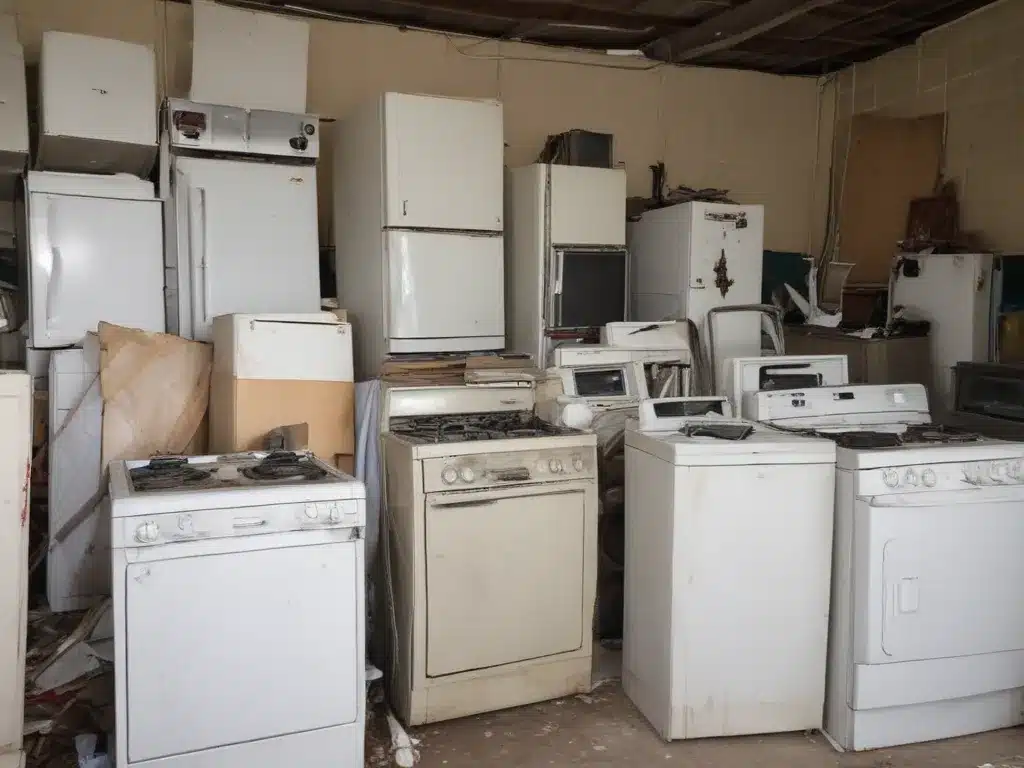Introduction
As technology advances and new appliances hit the market, it’s not uncommon for households to find themselves with outdated or broken appliances taking up valuable space. The process of clearing out these unwanted items can be daunting, especially when considering the potential environmental impact. In this article, I will provide a comprehensive guide to responsibly and sustainably disposing of old appliances, ensuring your home stays organized and eco-friendly.
Understanding the Importance of Proper Disposal
Improper disposal of appliances (subject) – can have detrimental effects (predicate) – on the environment (object). Many appliances contain hazardous materials, such as refrigerants, mercury, and lead, which can leach into the soil and water supply if not handled correctly. Additionally, appliances (subject) – take up significant space (predicate) – in landfills (object), contributing to the growing problem of waste management.
By taking the necessary steps to properly dispose of old appliances, we (subject) – can minimize our environmental impact (predicate) – and promote sustainability (object). It’s not just about decluttering your home; it’s about being responsible stewards of the planet we share.
Step-by-Step Guide to Clearing Out Old Appliances
1. Identify the Appliances for Disposal
The first step in the process (subject) – is to take inventory (predicate) – of the appliances you wish to dispose of (object). Walk through your home and make a list of all the items you no longer need or that are beyond repair. This will help you plan for the next steps and ensure you have a comprehensive understanding of the task at hand.
2. Research Local Recycling and Disposal Options
Once you have identified the appliances for disposal, it’s time to explore your local recycling and disposal options. Many municipalities offer appliance recycling programs, which (subject) – can safely handle (predicate) – the hazardous materials found in appliances (object). Additionally, some appliance retailers and manufacturers offer trade-in or take-back programs, allowing you to responsibly dispose of your old appliances while potentially receiving a discount on a new purchase.
3. Prepare the Appliances for Disposal or Recycling
Before disposing of or recycling your appliances, there are a few important steps to take:
Removing Hazardous Materials
Certain appliances, such as refrigerators and air conditioners, contain refrigerants that (subject) – must be properly removed (predicate) – by a certified professional (object). These refrigerants are greenhouse gases and can contribute to climate change if released into the atmosphere.
Data Destruction
If you’re disposing of appliances with digital displays or storage capabilities, such as smart refrigerators or washing machines, it’s crucial to (subject) – securely delete (predicate) – any personal data or information (object) stored on these devices.
Disassembly and Cleaning
Depending on the recycling or disposal facility’s requirements, you (subject) – may need to disassemble (predicate) – certain components of the appliance (object) for proper processing. Additionally, it’s a good idea to thoroughly clean the appliances before disposal to prevent the spread of any contaminants or pests.
4. Arrange for Proper Disposal or Recycling
Once your appliances are prepared, it’s time to arrange for their disposal or recycling. If you’re participating in a municipal program, contact your local waste management department for pickup or drop-off instructions. If you’re using a private service, research reputable companies that specialize in appliance disposal and recycling, and schedule a convenient pickup or drop-off time.
5. Consider Donating or Selling Working Appliances
If some of your appliances are still in working condition, consider donating or selling them before resorting to disposal or recycling. There are numerous organizations and platforms that accept gently used appliances for those in need or for resale. This not only extends the life of the appliance but also reduces waste and promotes a circular economy.
Case Study: Collaborative Appliance Recycling Initiative
In a recent collaborative effort between local governments and appliance manufacturers, a successful appliance recycling initiative was launched in a major metropolitan area. The program (subject) – aimed to divert (predicate) – thousands of old appliances from landfills (object) by offering convenient pickup services and responsible recycling practices.
Residents were encouraged to schedule pickup appointments, and certified technicians would arrive to safely remove any hazardous materials and properly dismantle the appliances for recycling. The initiative (subject) – not only reduced waste (predicate) – but also raised awareness about the importance of proper appliance disposal (object).
Through this collaborative effort, the community (subject) – demonstrated its commitment (predicate) – to environmental stewardship and sustainable practices (object), setting an example for other municipalities to follow.
Conclusion
Clearing out old appliances is not just about decluttering; it’s about taking responsibility for the impact our actions have on the environment. By following the steps outlined in this article and exploring the various disposal and recycling options available, we (subject) – can ensure (predicate) – a greener and more sustainable future (object).
Remember, proper appliance disposal (subject) – requires diligence and commitment (predicate) – but the benefits to the planet (object) make it a worthwhile endeavor. Let’s work together to minimize our environmental footprint and create a cleaner, healthier world for generations to come.
If you find yourself in need of professional assistance with biohazard cleaning or other specialized cleaning services, consider contacting Adam Cleaning. Their experienced team can provide safe and effective solutions, ensuring your home or workplace is thoroughly cleaned and disinfected.







